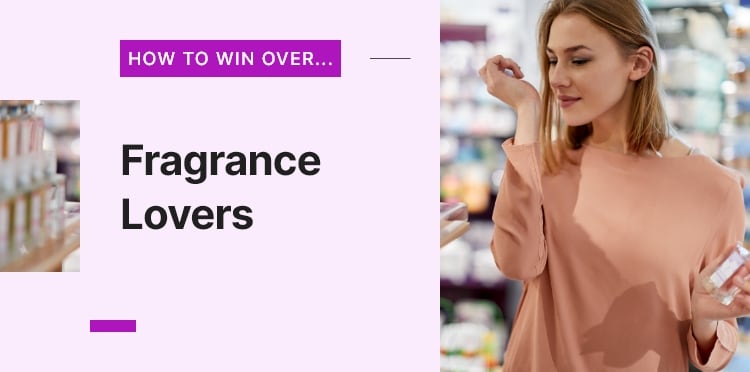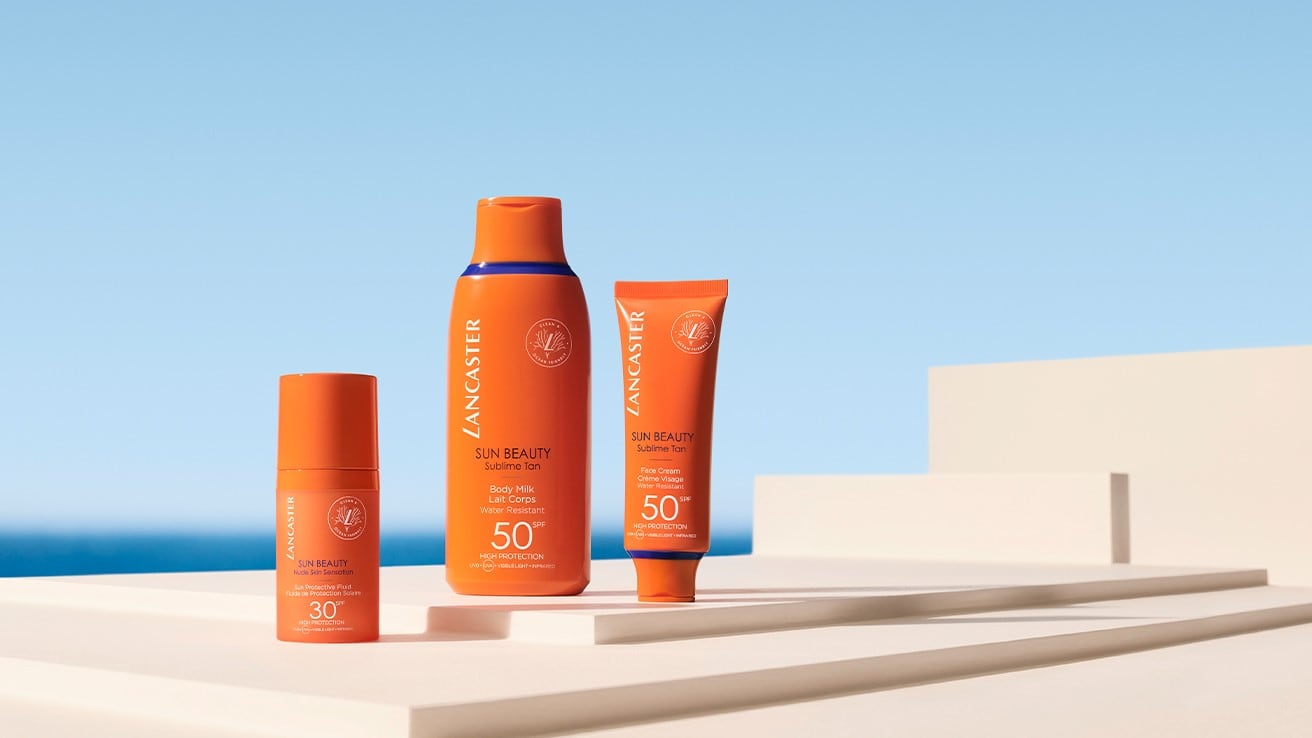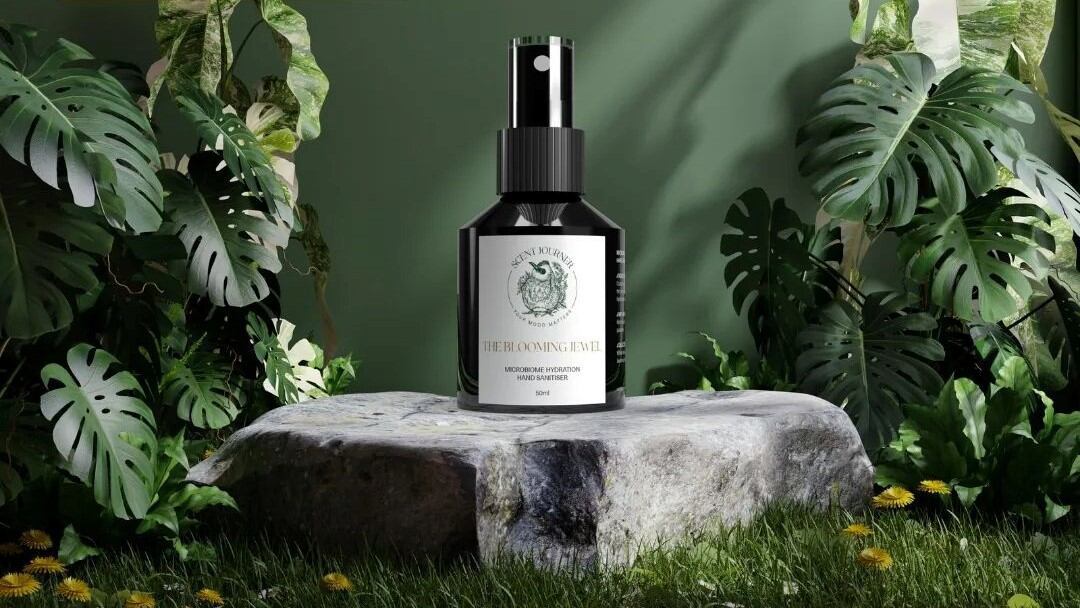Among all our five senses, our olfactory capabilities are arguably the most undervalued. The most brilliant minds have been quick to dismiss it as an evolutionary relic – something important for animals but not human beings.
The naturalist Charles Darwin thought the human sense of smell was vestigial, and German philosopher Immanuel Kant agreed it was the “most dispensable” of senses. Even Aristotle sniffed at mankind’s olfactory talents writing bluntly: “man smells poorly”.
Only recently have scientists begun to learn more about our overlooked olfaction. Through studies, they gained a new understanding of how sophisticated our sense of smell really is.
In 2017, neuroscientist Dr John McGann published a paper in Science debunking the belief that humans have a poor sense of smell. McGann noted that humans can distinguish an incredible number of odours and our sense of smell was similar to that of other mammals.
Our sense of smell came into the spotlight during the COVID-19 pandemic when it was established that a loss of smell could be a side effect of infection.
In a study published by the British Medical Journal, a team of researchers from Singapore, the UK and the US found that about 5% of the global population may develop long-term issues with their sense of smell or taste after COVID-19 infection.
Speaking on the American Psychological Association’s Speaking of Psychology podcast, Dr Pamela Dalton, an experimental psychologist at the Monell Chemical Senses Centre in Philadelphia, described losing our sense of smell, or anosmia, as “turning a light switch off.”
“It's really interesting because people are not aware until they lose it about how much it informs their ability to know where they are in time and space, their environment. It's the backdrop of everywhere we go and everyone we interact with. It's a piece of the fabric of our lives that we just don't appreciate until it's been cut away,” Dalton said.
This rapidly renewed interest in olfaction — proving the old adage that you never truly appreciate something until it is gone.
In the beauty and personal care industry, we saw the impact plainly in the rapid growth of fine fragrances, especially in Asia.
In 2021, beauty titan L’Oréal saw its luxury beauty division recover close to pre-COVID levels, attributed in part to the strong performance of fragrance, particularly in China.
“Historically, fragrance was a small category in China – less than 5% of the Chinese luxury market. It is growing very fast, in the last month of the year, fragrance was close to 10% of the Chinese luxury market with a new generation of Chinese customers discovering fragrance and loving the experience,” said Cyril Chapuy, president of the L’Oréal Luxe division during the firm’s 2021 annual results conference in February 2022.
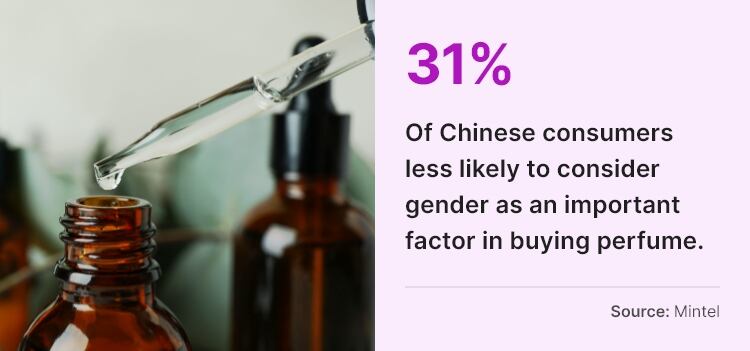
Similarly, French brand L’Occitane also saw sales in China rise by 23% in the first half of the 2022 fiscal year, driven by successful launches, including its Osmanthus fragrance. According to the firm, this fragrance accounted for 10% of the brand sales during the launch period.
It is not just China where we are seeing this fragrance renaissance. American beauty multinational Coty, which owns a range of blockbuster fragrance brands including Chloé and Hugo Boss, have highlighted South East Asia as an important market for its fragrance portfolio.
And it is not just the mega brands that are performing well. In Asia, we have seen a collection of impressive niche fragrance brands, all with their own distinct identities and voices. This includes brands such as Gabar, Maison Dixsept, Maison de L’Asie, and Siam 1928,
The booming perfume business in Asia can be boiled down to the renewed appreciation in fragrances, not just as another luxury commodity, but as an essential to wellness and self-expression.
Who’s buying: The new fragrance consumer
In the last decade, the way Asia has consumed perfumes have changed drastically. Typically, consumers bought perfumes for the brand and the status. They were given as gifts and used only for special occasions.
Asia proved to be a challenge for many fragrance brands, even one steeped in history like Molinard. Founded in 1849, the Grasse-based fragrance house is considered one of the oldest family-run businesses in perfumery.
In the 2010s, the company tried but failed to solidify its position in Japan because its strong fragrances like the iconic Habanita, failed to resonate with Japanese consumers who prefer more ‘polite’ scents.
A decade on, the fragrance consumer now has a heightened appreciation for the art of perfumery. Joyce Lian, founder of Singapore-based niche brand Scent Journer, considers her consumers to be extremely knowledgeable about fine fragrances.
In fact, she told CosmeticsDesign-Asia that she was recently blown away by her own consumer research which revealed the brands that her consumers were using.
“The fragrances they were using were all niche – I mean brands like Diptyque, Le Labo, and Penhaligon’s. These are people who really appreciate the art of perfumery and can really smell the quality and appreciate the story behind the fragrance they are wearing.”
The exposure to these niche brands has helped to cultivate a more refined palette and made consumers more open to experiencing less conventional notes. This is driving Scent Journer to develop more sophisticated and unique scents.
“Our current collection of fragrances is still rather floral so next year we are looking to move towards more woody or even fresh fragrances. Typically, floral and fruity scents are more popular, but we are seeing a shift. We’ve had feedback that consumers are looking for more woody fragrances for example,” said Lian.
She expressed that this new breed of fragrance connoisseurs challenged the brand to be original while keeping in tune with what is popular in the market.
The interest in fragrances is not limited to the luxury market, as proven by Thai masstige beauty brands Cathy Doll and Mistine, which have both recently unveiled a range of fragrances. For the former, branching out into a new category was a premiumisation opportunity.
“With Cathy Doll, we have always tried to keep the prices competitive. Now after more than 10 years, it’s time to introduce more upscale products to increase our brand equity,” said Kat Wei, regional director of business development.
When the brand launched its fragrance line, which consisted of a range of eau de parfum and scented body lotions, Wei expressed surprise that its retail partners were very keen to take it on despite the higher price point.
“After all, Thailand is a place where the average GDP per capita is lower than places like China. So, for expensive products, typically these beauty chain stores are not so welcoming. But this time a lot of them were quite interested.”
Cathy Doll’s first fragrance range has certainly attracted attention, especially with the boost from celebrity brand ambassador, Thai actor and model Gulf Kanawut. However, Wei believes the brand is still on a learning journey in this new category.
“There’s more room for improvement. One of the challenges is the price point, so we will be launching smaller volume bottles to encourage people to try it and reach more consumers.”
Getting scent-imental: The emotional power of fragrances
More than two years on from a devastating pandemic, we now know how scent, emotion and well-being are intertwined. This is possibly the biggest shift Jason Lee, founder of Scent by SIX has observed in the market.
“Traditionally, people perceived fragrance with a very aesthetic point of view. But after the COVID-19 pandemic, the lockdowns, and the inability for us to be together physically, people have become more mindful of the tangible benefits of scent. I’ve seen a big shift in how fragrances are perceived. Now, people pay more attention to what a scent can bring to the home, the workspace, or just quiet time by themselves.”
Scent by SIX debuted with a collection of perfumes inspired by the former Givaudan exec’s travels and centred heavily on storytelling. The outbreak of COVID-19 altered the brand’s direction towards championing mental health.
In 2020, SIX collaborated with the Singapore Association of Mental Health (SAMH) to develop Hikaru, a yuzu-themed scent collection which claims to uplift and evoke happiness, which features technology from Japanese flavours and fragrances producer Takasago.
It has since followed up with two more collections, Sleep Returns and Care. The latter is a range of three scents that was co-developed with non-profit group Caregivers Alliance Limited (CAL).
The feedback the collections have received has been very encouraging for the brand. Lee previously told us that sales of the Hikaru collection now rival that of its signature scent, 27F Biei. More importantly, it has seen customers returning to repurchase its mood-lifting fragrance.
“This is truly what Scent by SIX has been moving towards. We want to channel our product offerings and communications on what the brand is all about, to something that will benefit the users and beyond,” said Lee.
The success SIX has experienced highlights that the functional aspect of fragrances will become more important moving forward.
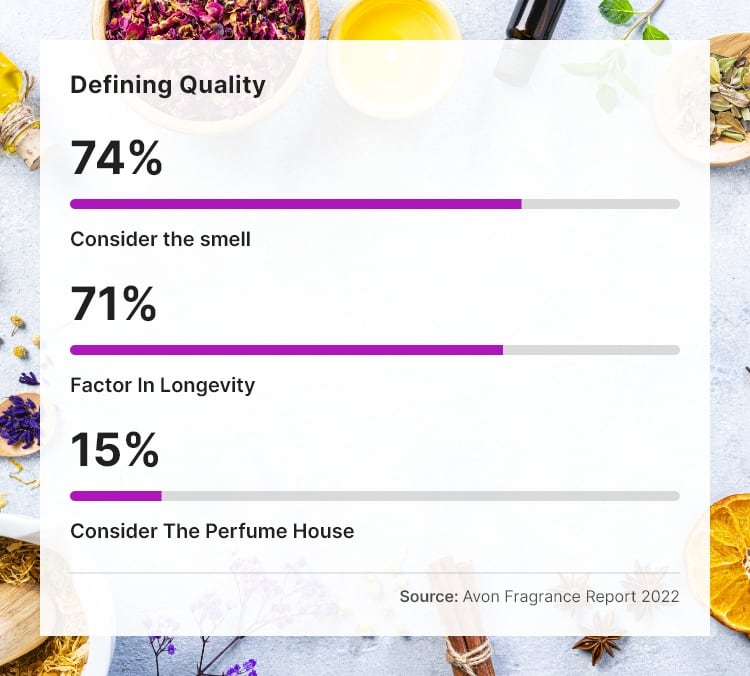
Scent Journer, for instance, develops its perfumes to have benefits beyond smelling nice. Its Dancing Blue Bees perfume claims to help its users relax and focus. “With the current technology and research around fragrance itself being collected through things like neuroscience, I saw an opportunity to bring something different to the market,” said Lian.
With more research being conducted into the benefits of fragrances, we can expect the emphasis on fragrance to bleed over to other beauty categories like skin care.
In November 2022, Australian sandalwood producer Quintis debuted its first skin care brand, About Time We Met, which features Indian Sandalwood oil as its hero ingredient.
The company’s research has shown that in addition to its calming effect, Indian sandalwood also has active properties that help to reduce visible signs of ageing and protect the skin against pollution and blue light.
“There’s an importance of fragrance outside of personal fragrance. The ability of fragrance to do something, to have a reaction other than just smelling nice is absolutely gaining traction,” said Vanessa Ligovich, chief marketing officer, Quintis Sandalwood.
A personal signature: A new mode of self-expression
In November, L’Oréal hosted a roundtable to discuss the mega-trends it has observed in China, Japan, and South Korea, and how they will affect the wider beauty market. One of the trends highlighted was the theme of self-expression.
“Self-expression in beauty is probably due to the rise and the acceleration of fashion, the creation of artists, the creation of entrepreneurs. It’s very much led by the Korean ecosystem, but I must say that we see the same phenomena happening also in China,” said Maxime De Boni, vice president, L’Oréal R&I, North Asia and China.
Fragrance is a perfect medium of self-expression. For many consumers, fragrances are quickly becoming a “signature of their personality”, said Kristina Strunz, vice president sales, Coty SEA.
“And this is also why you see the popularity of niche fragrances – because everybody wants to be different. They are individual, so they don’t want to smell like everyone else,” she said.
Founder and CEO of bespoke perfume house Maison 21G, Johanna Monange is also seeing the desire for self-expression growing among consumers.
“I feel this sense that people want to be themselves, especially after COVID, when we couldn’t do what we wanted for the first time in our lives and we lost our freedom. Which is why you see, especially in the young generation, people just want to do what they want. I think that is exceptional and self-expression is going to be big.”
This desire to express one’s individuality will only reinforce the demand for personalisation. In fact, she believes consumers are now less afraid of getting their hands dirty and being creative.
“At the beginning, people were almost afraid of [Maison 21G’s bespoke concept]. When you give people the freedom of creation, it’s hard at the beginning. So, three years ago, when I started this concept, it was hard,” said Monange.
“I could have just created a star perfume and pushed it out, but I wanted to give people the chance to express themselves. Now, I see the traction and I’m amazed at how successful our workshops are, that people want the experience, they want to come and integrate.”
E-volving future: Fragrance in e-commerce and beyond
One of the great quandaries of the digital age was how fragrance brands could get consumers to discover and buy perfume online. Brands developed discovery sets, gave out scent cards and tiny sample vials, but it took a global pandemic to make the shift online.
“The number one gamechanger was COVID. Pre-COVID, people wouldn’t shop for fragrance online. There was this natural barrier… I think there was this preconception that without smelling it, you cannot buy fragrance,” said Strunz.
However, as we all got used to the idea of acquiring everything we needed online, brands saw a boost in online sales.
“Especially during the COVID time, people started to buy discovery sets online and then once you bought the discovery set, you discovered the scent and then you replenished again through the online channels,” said Strunz.
Once consumers started to get used to the idea of buying fragrance online, it resulted in an interesting ripple effect, Strunz explained.
“Basically, people became much more aware of fragrances and started to experiment more with fragrances. Secondly, they started to show the same behaviour as with make-up or skin care – trialling products, seeing if they like it, and replenishing again online. The natural transition of shopping in this category became much more in line with the normal consumer trends we would see.”
More Coty insights in the video below
This year, Coty launched a Chloé LazMall flagship on SEA e-commerce platform Lazada. This presented the firm with a new challenge, said Strunz.
“When we launched Chloé on LazMall, we were asking ourselves how can we convey the feeling of a Chloé woman through a fragrance? And how can we support our launch so that a consumer that was new to Chloé would immediately understand, what is the Chloé woman and what feeling you experience when you spray the fragrance?”
This led the company to push out a successful TikTok campaign, utilising mood boards to illustrate the “Chloé woman”.
This digital shift is a precursor to more innovation to address the shifts in consumer behaviour, which is likely to lead us towards Web 3.0 and the Metaverse – a thrilling development, said Strunz.
“What really excites me is a lot of technology, a lot of innovation on how you can bring this sensorial experience to the digital world. [Innovation] is really moving much faster, what really helps is the technology improvements like 5G.
A new digital frontier and its new possibilities are exciting for Coty, said Strunz. “We always have the pressure not to be the last. I think this is where Coty plays an important role because we are a fragrance-led powerhouse, so there’s an expectation that we are pioneers.”
It is not just Coty that is priming for a future in the Metaverse, the founders of Maison 21G, Scent by SIX and Scent Journer are already considering their hyper-digital futures.
Maison 21G recently unveiled a new exhibition, A Polysensorial Reconnection, which brought together three artists from different disciplines to bring five specially crafted scents to life through visuals, movement and music.
Monange told us at the launch that because scent is so difficult to express, she had to work with various artists to engage all five senses to convey the story behind each fragrance. Moving forward, Maison 21G is exploring the potential of developing non-fungible tokens (NFTs) for her clients that will house their own secret perfume concoctions.
Lee muses that new technology could evolve fragrance into an interchangeable wearable, giving you access to a “jukebox of fragrances”. He concluded that brands will only be limited by their imagination.
“The metaverse is not going to overtake what we have now, but it is certainly going to be a very significant complementary space. Nothing is stopping us from imagining or reimagining how things can be like around us,” said Lee.
For the founder of Oo La Lab, one of the first craft-your-own fragrance experiences in Singapore, the Web 3.0 prospects have very little appeal.
“If I could be blunt at this point, no, it doesn't interest me at all. I’m all for innovation – and we have even developed a machine learning algorithm to help people choose ingredients and so forth. I think the underlying technology is interesting but selling a digital token, or an image, there’s overhype around that. I think the money could be better invested,” said Dan Terry.
“While we are looking at ways that technology can help, I'd rather focus on more important things.”
Terry elaborated that he views fragrance as a platform to stir interest in more earthly prospects, like strengthening the connection humans have with nature.
“What does excite me is the connectivity back with nature, the interest in ingredients, and the sustainability of products. People are paying attention to these things and in a lot of ways I feel the veil has been lifted. Industries have to do more than just having something on the label, whether its harvesting techniques or working closer to farmers.”
While some are investing in virtual space, Terry hopes to invest in physical land. Part of his vision for Oo La Lab is to expand into a bigger space – one with ample room for a garden – that can enhance the experience for patrons.
“We are an experienced-led brand. It’s about immersing people in those details because those details are meaningful. It’s exciting to go down all that and show people what the ingredient looks like as a plant, as a raw material and what it becomes in the end applied to a fragrance. Honestly, I think the real world is just so much more interesting.”
We can only speculate how the fragrance world will continue engaging with Web 3.0 and its future. But for now, brands must contend with the increasing sophistication of the modern fragrance consumer and how fragrance itself is evolving beyond its traditional role as a status symbol or as a means for seduction.


